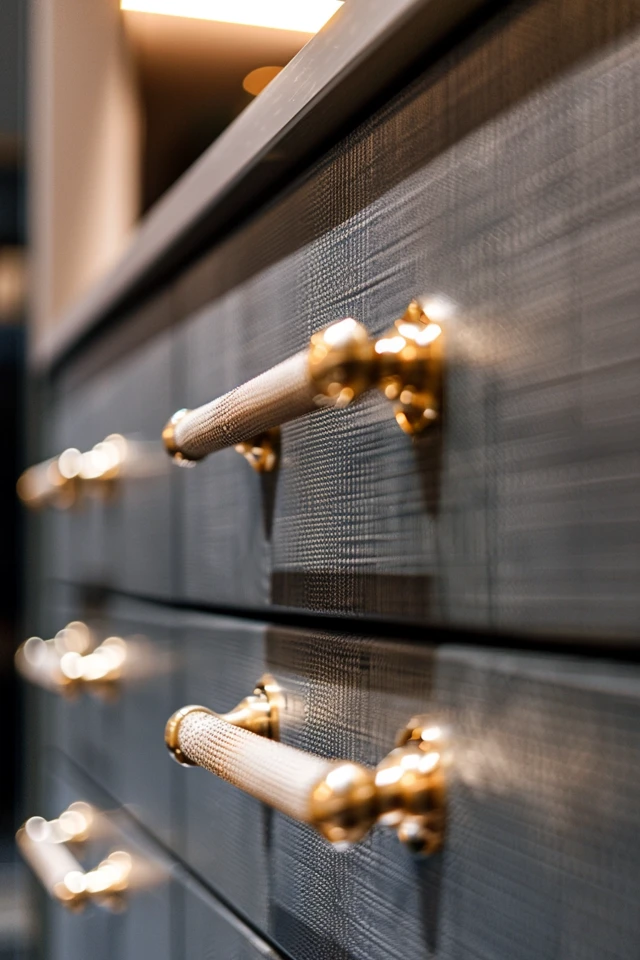Hello, fellow DIYers!
Are you looking to give your drawers a fresh makeover? One simple and effective way to do so is by replacing the drawer pulls. Whether you’re revamping your kitchen cabinets, bathroom vanity, or dresser, measuring for replacement drawer pulls is essential for achieving the perfect hardware fit.
Don’t worry if you’re new to this. In this guide, I’ll walk you through the step-by-step process of measuring drawer pulls to ensure a seamless fit. So, let’s dive in!
Key Takeaways:
- Measuring drawer pulls involves determining the center-to-center distance, length, and projection.
- Take into account the size of the drawers or cabinets and ensure the pull length is proportional.
- Consider the comfort of gripping and the swinging action of cabinets when measuring the projection.
- If new pulls don’t fit, fill old screw holes with putty or wood filler.
- Choose the correct hardware size and finish to complement your design.
Measuring Center-to-Center Distance
When it comes to replacing cabinet pulls or drawer handles, measuring the center-to-center distance is crucial to ensure a proper fit. This measurement determines the spacing between the screw holes of your existing hardware, which in turn will determine the size of the replacement pulls you need.
To measure the center-to-center distance, you will need a ruler or measuring tape. Start by removing the existing pulls from your cabinets or drawers. Then, measure from the center of one screw hole to the center of the other. This will give you the exact center-to-center distance that you need to match when purchasing new pulls.

If you want to use the existing pre-drilled holes in your cabinets or drawers, it’s important to buy new pulls with the same center-to-center distance. This ensures that the new hardware will line up perfectly with the existing holes, saving you time and effort. However, if you want to change the spacing or if your old pulls are no longer available in the desired size, you may need to fill the old screw holes with putty or wood filler and drill new ones.
When filling old holes, make sure to use putty or wood filler that matches the color of your cabinets or drawers. Once the filler is dry, sand it down to create a smooth surface before restaining or repainting. This will help the new pulls blend seamlessly with your furniture.
It’s worth noting that the measurements for cabinet pulls are often given in millimeters. If you prefer working with inches, you can easily convert the measurements by dividing the millimeter value by 25.4.
Common center-to-center distances for cabinet pulls
- 64mm
- 76mm
- 89mm
- 102mm
- 127mm
- 203mm
These are the most commonly used center-to-center distances for cabinet pulls. Keep in mind that these measurements may vary depending on the style and brand of the pulls you choose.
Now that you know how to measure the center-to-center distance and understand the common sizes available, you can confidently shop for replacement pulls that will perfectly fit your cabinets and drawers. Whether you’re updating your kitchen or revamping a piece of furniture, the right hardware can make all the difference in both style and functionality.

Measuring Length and Projection
When it comes to replacing drawer pulls, it’s essential to get the measurements right to ensure a perfect fit. Two important factors to consider are the length and projection of the pull. Let’s dive into the details.
First, let’s talk about length. It’s crucial to choose a pull that is proportional to the size of your drawers or cabinets. A general rule of thumb is to select a length that is no longer than one-third of the height of the cabinet door and no longer than one-half of the width of the drawer. This proportional length ensures a visually pleasing look and avoids overwhelming the overall aesthetic.
To determine the length of the pull when replacing existing hardware, simply measure from one end of the cabinet to the other. Take note of this measurement as you explore different pull options.
Next, consider the projection, or depth, of the pull. The projection should provide enough space for a comfortable grip. When choosing a pull, think about the level of comfort you desire. A larger projection allows more room for hands to fit between the pull and the cabinet, enhancing ergonomics. On the other hand, a smaller projection can prevent damage from swinging cabinets, ensuring they don’t collide with nearby objects.
So, whether you’re measuring the length or projection, it’s important to consider your specific needs and the type of pull you’re using. By taking these factors into account, you’ll be well on your way to selecting the perfect replacement drawer pulls that not only fit your cabinets but also provide a comfortable and functional grip while preventing any potential damage.


